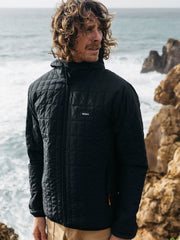The Plastic Detective
04.19.21
4 min read
Written by Dr Imogen Napper
Image by Dr Imogen Napper
Have you ever wondered how much plastic is in our oceans? Do you remember our beaches being covered in plastic pollution when you were younger? Does it puzzle you where all this plastic comes from?
I grew up in a small seaside town near Bristol, and these are the questions I have been asking since I was young. When I was growing up, I do not remember the extent of plastic I see on the same beaches as I do today. I was able to turn my curiosity into research, where now I investigate the different sources and fates of plastic into the environment. As a result, I have best been described as a ‘plastic detective’.
It still surprises me to know that plastic was only invented around 100 years ago, yet the damage that we have caused within this time is concerning and eye opening. Plastic has been found at the depth of the ocean and near the top of Mt Everest.
Wrongly, I used to think the main way to solve the issue was to completely eradicate plastic. I’ve been reminded that plastic is actually an extremely useful material, which has revolutionised our lives in many areas. Look around where you are currently and see how much plastic there is; this could potentially include the clothes you are wearing, the chair you are sat on and elements of the phone or laptop you are reading this from. This is especially relevant in the height of the COVID-19 pandemic where it has been used in many healthcare scenarios keeping us safe.
The issue stems from the sheer amount of plastic we make, especially in terms of single use applications, which in turn creates a lot of waste.
As plastic is so durable, it can persist in the environment where it accumulates. Millions of tons of plastic may enter our ocean every year. When I think of plastic pollution, I will often picture items that I expect to see, such as single use plastic water bottles or carrier bags. However, what I find the most intriguing is common sources which are unobvious.
My first research investigated how many tiny plastic particles, called microbeads, could be in facial scrubs. Microbeads were put into facial scrubs to act as exfoliants and make our skin smooth. However, no one had previously quantified how many microbeads could be in one bottle. We found 3 million microbeads in one bottle of facial scrub. So, every time you wash your face, the squirt of facial scrub on your hand could have over 10,000 microbeads. These get washed off your face, go down the drain and can potentially make their way into the natural environment by bypassing wastewater treatment works.
As a result of this, it showed me how research can be used as a positive driving force for change. It informed consumers, like you and me, that we have a powerful choice in our actions. Consumers started to boycott the products which led to industry voluntarily removing microbeads. This research then influenced legislation around the world banning them. We went back and tested the same products two years after our experiment and found all of them were microbead free, which was a fantastic feeling.
It can also be surprising to know our clothes can also be made out of plastic. Take a look at the clothes in your wardrobe. When our clothes are swishing and swirling around in the washing machine, tiny plastic fibres can come off and join the wastewater. Then, like the microbeads, they can potentially enter our ocean. We found 700,000 fibres can come off our clothes per wash. Now multiply that for how many times you wash your clothes per year. That is a substantial amount of plastic potentially being release from one household.
This research then progressed to explore the exciting developments from innovation. We conducted research on different inventions which aim to stop microfibres being released into the wastewater when washing clothes. This included inventions that would go into the drum of a washing machine and also those that would be incorporated into the washing machine itself. There was wide variation on how successful these inventions were, but we discovered that some inventions were 80% effective in stopping the release of the plastic fibres. So, watch this space as it could be the future of how we wash our clothes!
Sometimes, it can seem like we are trying to fight a battle that can’t be won. However, research has continued to show me how making small changes can have a huge difference. Choosing a facial scrub without plastic microbeads could stop millions of plastic particles potentially entering the environment. Only washing your clothes when you need to could stop hundreds of thousands of plastic fibres from being shed.
Additionally, it has shown the power of consumers, industry and governments listening and working together. We all have a unique perspective and skill set which represents a puzzle piece in the jigsaw in solving plastic pollution. Educating ourselves and others will continue to hold us accountable.
Plastic pollution is a complex situation with many moving parts and will not be an overnight success. If we continue to remind ourselves that even the smallest difference can have a huge impact, and build on that success, we are moving in the right direction.
















































































